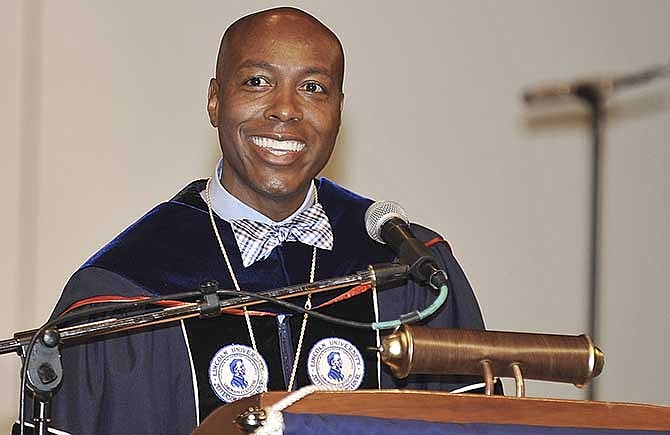Lincoln University curators last week voted to raise President Kevin Rome's salary because he "was the lowest-paid university president in the state of Missouri," Board President Winston Rutledge said.
Rome has been paid $200,000 a year since he started at Lincoln on June 1 last year.
Based on a state Higher Education department report issued in July - which used "estimated" compensation for the 2013-14 business year and didn't cover the current business year that started July 1 - Rome's salary actually was second from the bottom, with Missouri Southern State University's president the lowest, at $185,400 in 2012-13 and $165,000 (for a new president) in 2013-14.
But, when benefits are included, Rome's income rose to $264,831 in the 2012-13 year, but fell to last in the state in Missouri among the 14 university presidents and chancellors.
Rome's benefits were estimated in the state report to be $285,896 last year - second from the bottom, only ahead of Missouri Southern in Joplin.
His raise, effective Jan. 1, takes him to $223,000 a year and almost $309,000 in total benefits - raising him to 11th out of the 14 chief executives, "until (the others) change theirs," Rutledge said last week.
In explaining the LU curators' vote that was taken during a closed-session telephone conference call Dec. 18, Rutledge said: "We are proud of what we're doing, we're proud of what we are.
"And our president should be paid as much as some of the other university presidents in the state of Missouri."
University of Missouri System President Tim Wolfe - who oversees the four-campus system (Columbia, Kansas City, St. Louis and Missouri S&T at Rolla) - has the highest base salary: $453,347 in 2012-13 and $459,000 in 2013-14.
But, when benefits are included, he falls to second behind the University of Missouri-Columbia's chancellor, who was Brady Deaton for most of the two years covered by the state reports, and whose salary-plus-benefits package was $567,750 the first year and $592,764 the second year.
The state report includes medical, life insurance and retirement benefits in its listing of "direct compensation" and its "other compensation" category includes housing, utilities, housekeeping, groundskeeping, automobile allowance, professional development and things like clubs or other memberships."
The schools list their benefits in different ways, and don't all include amounts for the same things.
The comparisons used in this story for "total compensation" include base salaries and the totals listed by each school for their "direct" and "other" compensation.
Among the reasons Rutledge gave for Rome's raise were enrollment increases in recent years, and capacity occupancies in the residence halls.
But Lincoln has the second smallest student body of the state-owned and operated four-year universities, so LU students pay a higher proportion of the president's salary and benefits than at any other school - except Harris Stowe University in St. Louis, with a student population less than half of LU's.
Using that calculation, Harris Stowe's cost-per-student for the president's compensation was $237.77 in 2012-13 and $234.82 in 2013-14.
Lincoln's was $87.03 the first year, and $91.72 last year.
The best cost-per-student value is all University of Missouri students' share of Wolfe's compensation: $7.20 per student in 2012-13 and $6.87 in 2013-14.
Otherwise, the best values were Missouri State University's $15.45 for 2012-13 and $16.12 for 2013-14.

